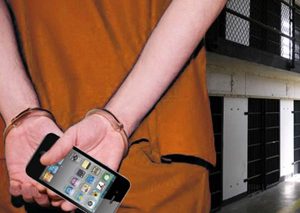While the driver seriously threatens his safety and passenger safety while using mobile phones, many policies stipulate the behavior of the driver, but the driver still uses the phone to make calls. Indian electronics engineers have developed and tested a new device that prevents motorists from answering or making calls with their mobile phones while driving, but allows vehicle passengers to use mobile phones. The heart of the device-the printed circuit-is slightly larger than the matchbox, and it can also transmit detailed information about the driver and vehicle to the nearest police control room in case it is needed.
It is priced at approximately Rs 450 and was jointly developed by Abdul Shabeer, the research director of the AVS School of Engineering, and Abdul Zubar at the School of Knowledge and Technology in Salem, Tamil Nadu. They reported detailed information about the device and its performance in the June Journal of Scientific and Industrial Research. Shabeer said that when a vehicle uses a mobile phone to distract the driver’s attention while driving, an accident occurs.

“Distractions can take many forms,” Shabeer told IANS over the phone. “The driver can move his eyes away from the road when he lifts the phone, or he can turn his attention away from the road by talking on the phone (cognitive distraction).” According to the report, mobile sensing devices are based on technology”. It basically takes advantage of the fact that the mobile phone emits a small amount of radiation when activated by an incoming or outgoing call. This radiation is absorbed by the antenna coupled to the device. If the radiated power is greater than a certain “threshold” (75 mV), the device will automatically activate the “mobile portable jammer“, which is an electronic signal that prevents users from making or receiving calls. .
According to the report, the electronic circuit is therefore designed and the “threshold level” is fixed so that it can be detected whether the mobile phone user is one of the driver or passenger of the vehicle. It only prevents the driver from making or answering calls that can use the phone, but does not prevent passengers from making or answering calls. This is achieved by placing the device above the driver’s seat and pointing its antenna towards the driver’s head. The antenna close to the driver will receive radiation above the “threshold” and will deactivate the driver’s phone. On the other hand, the radiation received by the antenna from the mobile phone used by passengers in other parts of the vehicle will be below the “threshold”, so the “telephone jammer” cannot be activated.
According to the report, the driver can only make or receive calls on the mobile phone after the vehicle is parked. Shabeer said: “When the driver’s phone receives a call, the microcontroller in the device will detect whether the vehicle is driving.” “If there is movement, the system will use the” voice chip “to warn the driver that the call is waiting, and then the driver There are eight seconds to stop the vehicle in a safe place and end the call. “Shabeer said that in the event of a violation, the driver ’s face captured by the micro camera installed in front of the driver and information from the vehicle ’s license plate will be transmitted to Police Control Room (PCR) recently.
According to Shabeer, electronic devices including the transmitter and low-resolution camera only cost 450 rupees. He announced. He said: “Installing the system on all vehicles will help to reduce traffic accidents to a great extent.” Shabeer said that the system has been successfully tested in combination with different mobile phones in Maruti Omni trucks.
Can the driver deactivate the device by unplugging the power cord or otherwise handling the device?
“Impossible,” Chapel said. “The device we developed is driven by the ignition of the vehicle, so every time the user starts the vehicle, it will communicate with the device, but if it cannot communicate, it will send a message to PCR with the vehicle.” Or damage the device, he will send the message to PCR, “he said.